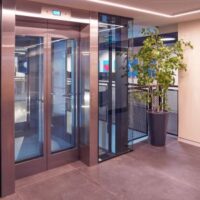Elevator Accidents in California: What You Should Know

Many commercial buildings in SoCal are over fifty years old. So, for the most part, an elevator in a seventy-five-year-old building has 1950s technology. Safety technology has advanced by leaps and bounds since then, but elevators in old buildings often don’t have this technology. The elevators work fine, but that’s about it. Furthermore, the older an object, like an elevator, becomes, the more maintenance it needs.
The combination of outdated technology and constant repair needs makes many elevators in many buildings in San Diego inherently dangerous. If an accident happens on one of these elevators, a Carlsbad personal injury lawyer obtains the compensation these victims, and their families, need and deserve. This compensation usually includes money for economic losses, such as medical bills, and noneconomic losses, such as pain and suffering.
Building a Case
This compensation is available if a Carlsbad personal injury lawyer proves negligence, or a lack of care, by a preponderance of the evidence, or more likely than not.
Many states use a complex victim classification system to determine negligence in elevator accidents and other premises liability matters. But California uses a much more uniform system. The extent to the owner’s duty of care to provide, and maintain, a safe and secure environment hinges on several factors, such as:
- Owner’s control over the property,
- Likelihood that someone could be seriously injured,
- Cost of preventing injury,
- Owner’s knowledge of the hazard, and
- Victim’s permission to be in the elevator.
That last bullet point brings up an important point. When building employees are injured in elevators, they’re usually entitled to workers’ compensation benefits, such as lost wage replacement and medical bill payment.
Note that there’s a big difference between employees of a tenant and employees of the building owner.
The owner’s knowledge of the hazard, which in this case is an unsafe elevator, is vital as well. Evidence on this point usually includes prior safety complaints, earlier safety incidents, and safety citations.
Potential Defenses
Comparative fault, in one form or another, may be the most common insurance company defense in elevator accident claims.
Pre-accident comparative fault is technically assumption of the risk. This defense usually involves warning signs, like “Caution Under Construction.” Such a sign could reduce the amount of compensation in the case if the victim saw the sign, could read the sign, and could understand what the sign meant.
If the insurance company proves all three elements of assumption of the risk, jurors must apportion fault as outlined below.
Accident comparative fault basically shifts blame for injuries from the elevator’s owner to the victim. For example, if Allan puts his head between elevator doors to keep them from closing (as a victim supposedly did in Houston), he may be partially at fault for injury if the doors don’t freeze as they should.
In these cases, jurors must apportion fault between the parties 50-50, 80-20, or another percentage basis. California is a pure comparative fault state. If the tortfeasor (negligent owner) was only 1 percent responsible for injuries, the tortfeasor is liable for a proportionate share of damages.
Reach Out to a Diligent San Diego County Lawyer
Injury victims are entitled to substantial compensation. For a confidential consultation with an experienced personal injury lawyer in Carlsbad, contact the Pursley Law Firm. You have a limited amount of time to act.
Source:
commbuildings.com/BuildingAgeData.pdf

